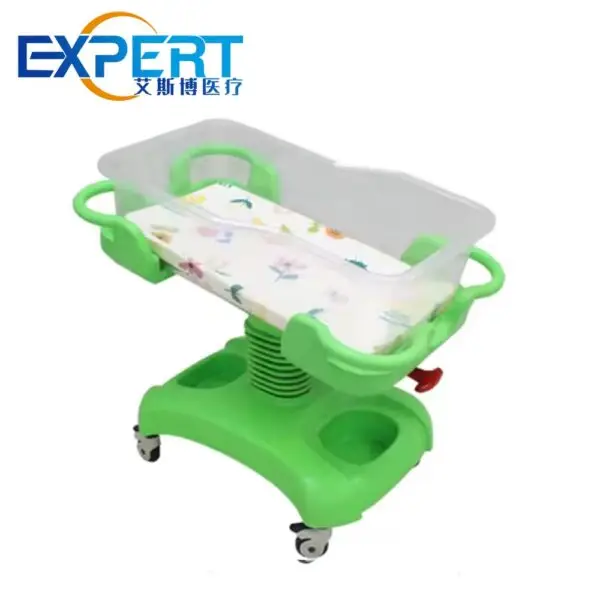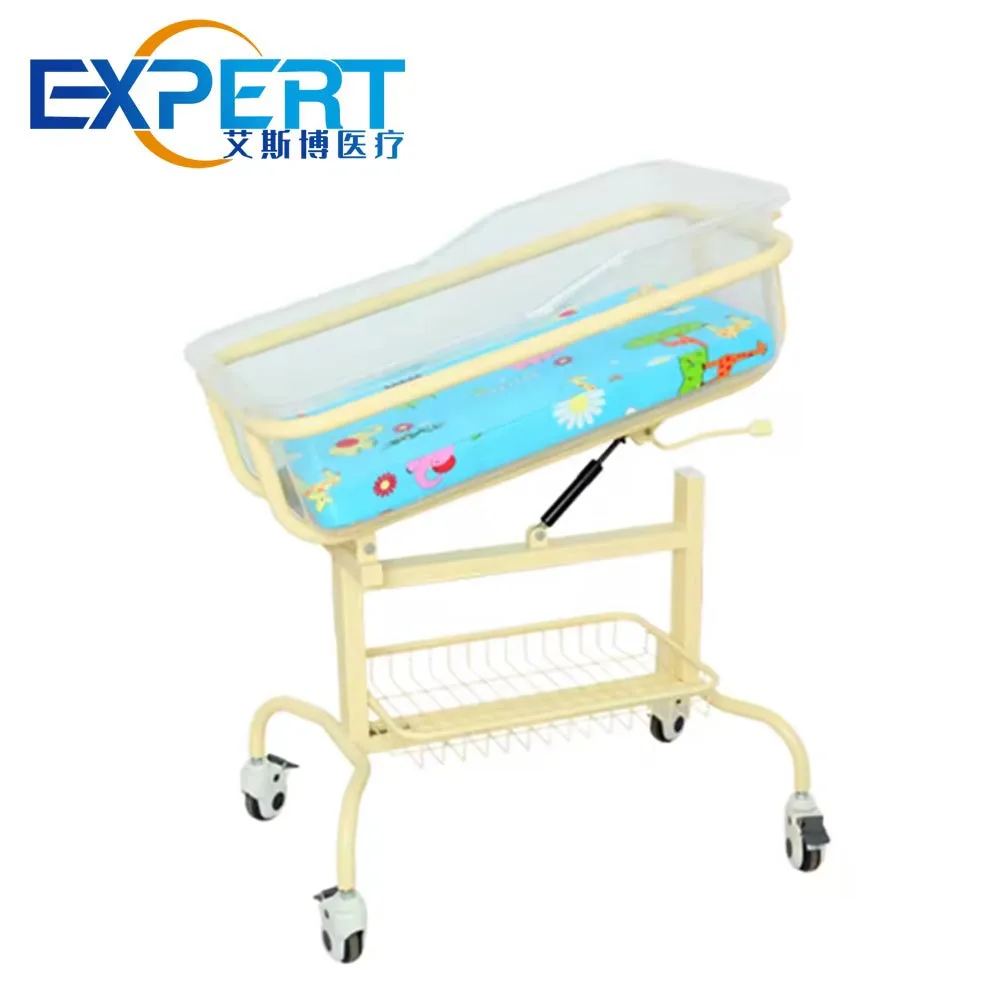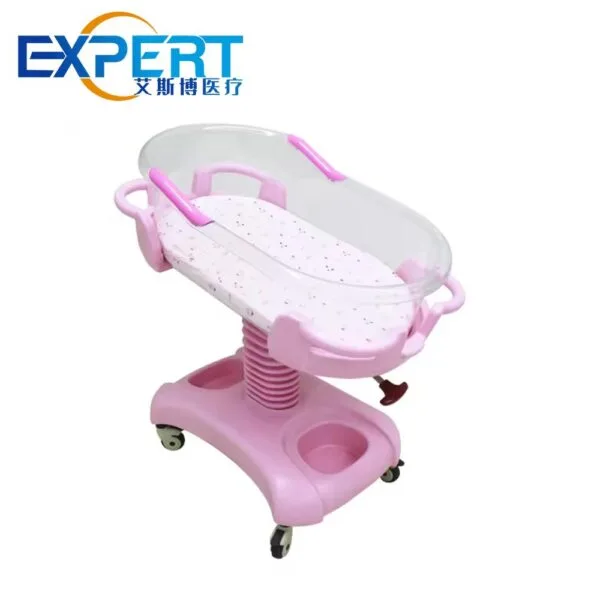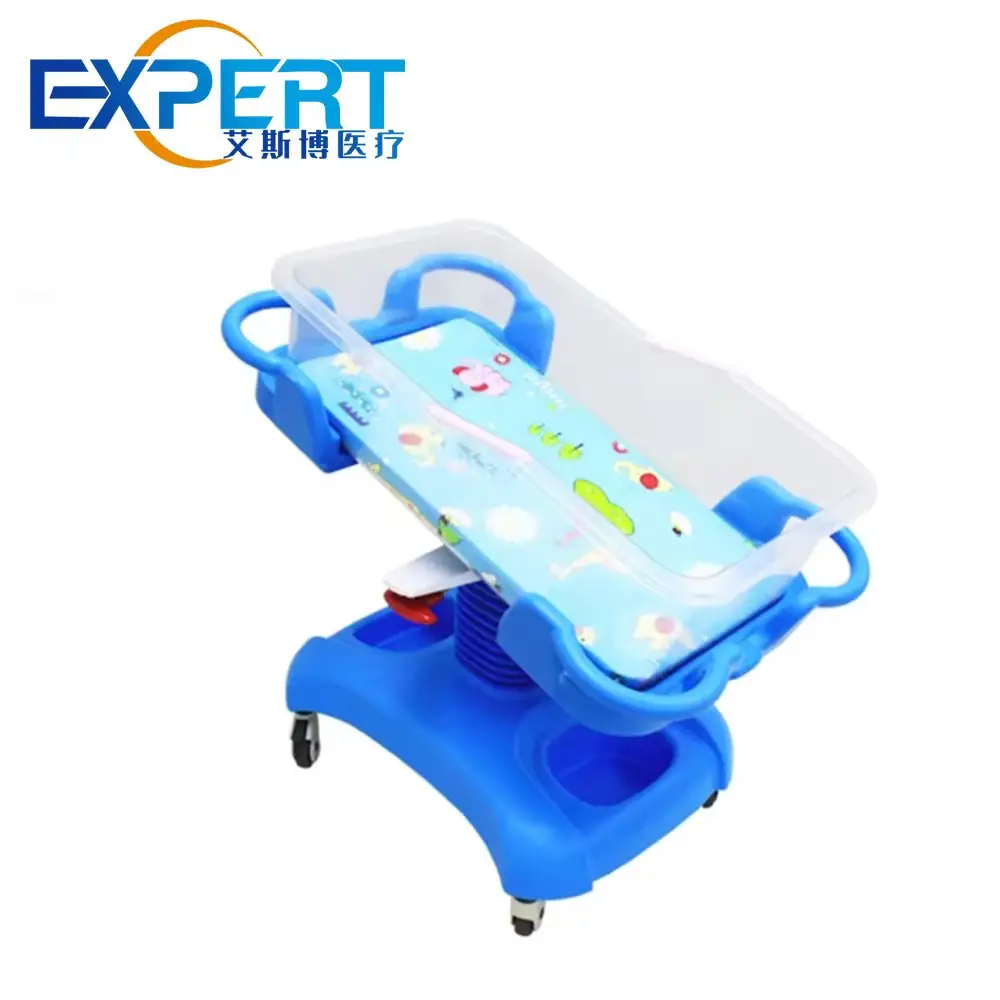Die Anschrift
304 Nordkardinal St.
Dorchester Center, MA 02124
Arbeitsstunden
Montag bis Freitag: 7:00 - 19:00
Wochenende: 10:00 - 17:00
Willkommen auf meinem Blog!
Bevor wir in den Inhalt eintauchen, wenn Sie an unseren Produkten interessiert sind oder Fragen haben, besuchen Sie bitte unsere Kontaktiere uns Seite auf der Website. Unser Team steht Ihnen bei Anfragen, Bestellungen oder sonstiger Unterstützung gerne zur Verfügung.
Lassen Sie uns nun gemeinsam unsere Reise beginnen. Ich hoffe, Sie finden die Inhalte hier aufschlussreich, spannend und wertvoll.

Die bestmögliche Pflege und Sicherheit von Neugeborenen hat für medizinisches Personal höchste Priorität, insbesondere auf Neugeborenen-Intensivstationen (NICUs) und Kinderstationen. Eines der wichtigsten Ausstattungsstücke für diese Einrichtungen ist das Säuglingsbett. Diese speziell für Säuglinge und Neugeborene entwickelten Betten tragen entscheidend zum Komfort, zur Sicherheit und zum Wohlbefinden schutzbedürftiger Patienten bei. Dieser Blogbeitrag beleuchtet die Funktionen, Vorteile und Bedeutung der Wahl des richtigen Säuglingsbetts und gibt Einblicke, wie diese Betten zu einer verbesserten Versorgung in Krankenhäusern beitragen.
Ein Säuglingskrankenhausbett ist ein spezielles medizinisches Bett zur Unterstützung und Pflege von Neugeborenen, insbesondere in Krankenhäusern wie Neugeborenen-Intensivstationen, Entbindungsstationen und Kinderstationen. Diese Betten sind mit Funktionen ausgestattet, die die Sicherheit, den Komfort und das Wohlbefinden des Säuglings in den Vordergrund stellen und gleichzeitig dem medizinischen Fachpersonal eine optimale Versorgung ermöglichen.
Krankenhausbetten für Säuglinge sind oft mit Sicherheitsgittern, Höhenverstellung und speziellen Funktionen wie einer Wippfunktion ausgestattet, um den Bedürfnissen von Frühgeborenen oder kranken Säuglingen gerecht zu werden. Sie verfügen zudem in der Regel über transparente Seitenwände, die eine einfache Beobachtung und Überwachung durch medizinisches Personal und Eltern ermöglichen.
Bei der Auswahl des richtigen Krankenhausbetts für Säuglinge geht es darum, die wichtigsten Merkmale zu kennen, die diese Betten für den Krankenhausgebrauch geeignet machen. Im Folgenden sind einige wichtige Merkmale aufgeführt, die Sie berücksichtigen sollten:
Eines der wichtigsten Merkmale eines Säuglingsbetts ist seine Höhen- und Positionsverstellung. Die Möglichkeit, das Bett anzuheben, abzusenken und in verschiedene Richtungen zu neigen, ermöglicht es dem Pflegepersonal, das Baby für medizinische Eingriffe oder zur Komforteinstellung besser zu positionieren. Diese Funktion entlastet zudem medizinisches Personal und Pflegekräfte, da sie den Zugang zum Baby erleichtert.
Sicherheit ist ein wichtiges Anliegen bei der Pflege von Neugeborenen. Ein Babybett ist daher mit hochwertigen Sicherheitsgittern ausgestattet, die Stürze und Verletzungen verhindern. Die Gitter sind in der Regel gepolstert, um Verletzungen des Babys zu vermeiden. Die transparenten Seiten ermöglichen es den Pflegekräften, das Baby aus allen Blickwinkeln zu beobachten und so eine ständige Überwachung zu gewährleisten, ohne es zu stören.
Viele Krankenhausbetten für Säuglinge sind mit integrierten Temperaturkontrollsystemen ausgestattet, um die richtige Umgebung für Neugeborene zu gewährleisten, insbesondere auf Neugeborenen-Intensivstationen. Die Temperaturüberwachung ist für Frühgeborene, die möglicherweise Schwierigkeiten mit der Regulierung ihrer Körpertemperatur haben, von entscheidender Bedeutung. Betten mit eingebauten Wärmegeräten sorgen für Komfort und Stabilität des Säuglings und vermeiden gleichzeitig externe Geräte, die den Bereich stören könnten.
Säuglingsbetten sind oft mit Rädern ausgestattet, sodass sie leicht zwischen verschiedenen Räumen oder Bereichen des Krankenhauses bewegt werden können. Diese Funktion ist besonders in Notfällen oder beim Transport des Babys zu verschiedenen Behandlungen nützlich. Die Tragbarkeit des Bettes ermöglicht es den Pflegekräften außerdem, sich um das Baby zu kümmern, ohne es häufig bewegen zu müssen, wodurch das Risiko weiterer Belastungen oder Verletzungen verringert wird.
Viele Krankenhausbetten für Säuglinge sind mit integrierten Plattformen oder Halterungen für medizinische Geräte wie Monitore, Infusionsständer und Beatmungsgeräte ausgestattet. Diese Integration ist in Neugeborenen-Intensivstationen unerlässlich, da Säuglinge häufig kontinuierliche medizinische Betreuung und Behandlung benötigen. Durch die leicht zugängliche Ausstattung können medizinische Fachkräfte eine reibungslose Versorgung gewährleisten, ohne den Komfort des Säuglings zu beeinträchtigen.


Die Vorteile eines hochwertigen Krankenhausbetts für Säuglinge gehen über den grundlegenden Komfort hinaus. Hier sind einige wichtige Vorteile:
Verbesserte Sicherheit
Die Hauptfunktion eines Babybetts ist die Sicherheit von Neugeborenen. Merkmale wie Sicherheitsgitter, verstellbare Einstellungen und transparente Seiten sorgen dafür, dass das Baby stets geschützt ist und gleichzeitig von medizinischem Fachpersonal und Eltern genau beobachtet wird. Diese Merkmale verhindern versehentliche Stürze, sorgen für eine sichere Schlafumgebung und geben den Betreuern ein beruhigendes Gefühl.
Bessere Überwachung und Zugänglichkeit
Dank der Höhenverstellung und transparenten Seitenteile ermöglichen Säuglingsbetten dem Pflegepersonal einen einfachen Zugang zum Baby für die Behandlung und bieten den Eltern jederzeit freie Sicht auf ihr Neugeborenes. Dieses Design steigert nicht nur die Effizienz medizinischer Eingriffe, sondern stärkt auch die Bindung zwischen Eltern und Baby durch die ständige visuelle Sicherheit.
Temperaturregelung
Für Säuglinge, insbesondere Frühgeborene, ist die Aufrechterhaltung der Körpertemperatur entscheidend. Krankenhausbetten für Säuglinge mit integrierter Temperaturregelung sorgen für eine stabile Umgebung und verhindern gesundheitsschädliche Temperaturschwankungen. Eine gut regulierte Temperatur reduziert die Belastung der Entwicklungssysteme des Babys und fördert gesundes Wachstum und Entwicklung.
Reduziertes Infektionsrisiko
Viele Krankenhausbetten für Säuglinge bestehen aus leicht zu reinigenden und zu desinfizierenden Materialien, wodurch das Infektionsrisiko minimiert wird. Einige Betten sind zudem mit Funktionen ausgestattet, die eine sterile Umgebung fördern, was in Neugeborenen-Intensivstationen von entscheidender Bedeutung ist. Regelmäßige Hygiene und antimikrobielle Oberflächen verbessern die Infektionskontrolle zusätzlich und schützen gefährdete Neugeborene vor schädlichen Bakterien und Viren.
Verbesserter Komfort für Babys und Betreuer
Dank ihres ergonomischen Designs und der einstellbaren Einstellungen bieten Krankenhausbetten für Säuglinge nicht nur dem Baby, sondern auch dem Pflegepersonal Komfort, das Eingriffe durchführen oder Pflege leisten muss. Die weiche Matratze und die sanfte Unterstützung sorgen für einen erholsamen Schlaf des Babys, während die einstellbaren Funktionen die Belastung des medizinischen Personals reduzieren und so die Pflegeeffizienz insgesamt verbessern.
Die Wahl des richtigen Krankenhausbetts für Säuglinge hängt von den spezifischen Anforderungen des Krankenhauses, dem Zustand des Babys und dem erforderlichen Pflegegrad ab. Hier ist eine Vergleichstabelle der gängigen Krankenhausbetttypen für Säuglinge:
| Bettentyp | Hauptmerkmale | Am besten geeignet für |
|---|---|---|
| Standard-Krankenhausbett für Säuglinge | Höhenverstellbar, Sicherheitsgeländer, Temperaturregelung | Allgemeine Neugeborenenversorgung in Entbindungsstationen |
| NICU-Inkubatorbett | Vollständig umschlossen mit Temperatur- und Feuchtigkeitskontrolle | Frühgeborene oder schwerkranke Säuglinge auf Neugeborenenintensivstationen |
| Strahlungswärmebett | Offenes Bett mit Strahlungsheizsystem | Sofortige postnatale Versorgung und Wiederbelebung |
| Umbaubares Kinderbett | Verstellbares Kinderbett mit durchsichtigen Seiten | Übergangspflege in Kinder- oder Entbindungsstationen |
| Transport-Kinderbett | Mobiles Bett mit integrierten Gerätehaltern | Transfer von Babys zwischen Stationen oder für Eingriffe |

Bei der Auswahl des richtigen Säuglingskrankenhausbetts für Ihre Einrichtung müssen mehrere Faktoren sorgfältig berücksichtigt werden:
Patientenbedürfnisse
Berücksichtigen Sie die Art der Pflege, die die Säuglinge in Ihrer Einrichtung benötigen. Für die allgemeine Neugeborenenpflege kann ein Standard-Krankenhausbett mit verstellbarer Höhe und Sicherheitsgittern ausreichend sein. Für Frühgeborene oder schwerkranke Säuglinge ist jedoch ein Inkubatorbett mit integrierter Überwachung und Temperaturregelung auf der Neugeborenen-Intensivstation besser geeignet.
Raum und Layout der Einheit
Prüfen Sie den verfügbaren Platz in Ihrer Einrichtung, insbesondere auf der Neugeborenen-Intensivstation oder der Entbindungsstation. Stellen Sie sicher, dass die von Ihnen gewählten Betten problemlos in die Einrichtung passen und Pflegekräften und Eltern einen problemlosen Zugang zum Baby ermöglichen.
Portabilitätsanforderungen
Wenn Ihre Einrichtung häufig Säuglinge transportiert, ist es wichtig, mobile und leicht manövrierbare Betten zu wählen. Ein Transportbett mit integrierten Rädern und Halterungen für Babyartikel erleichtert die Bewegung, ohne das Baby zu stören.
Sicherheitsvorrichtungen
Legen Sie Wert auf Sicherheitsmerkmale wie stabile Sicherheitsgeländer, feststellbare Räder und gepolsterte Seiten, um Neugeborenen optimalen Schutz zu bieten. Transparente Seiten ermöglichen zudem eine ständige Überwachung und minimieren so die Notwendigkeit häufiger Handhabung.
Budgetüberlegungen
Die Wahl des richtigen Säuglingskrankenbetts ist zwar entscheidend, Budgetbeschränkungen können Ihre Möglichkeiten jedoch einschränken. Arbeiten Sie mit Lieferanten zusammen, um Betten zu finden, die Ihren Bedürfnissen und Ihrem Budget entsprechen. Erwägen Sie die Anschaffung von Mehrzweckbetten, die für verschiedene Pflegestufen geeignet sind.
Das Krankenhausbett für Säuglinge ist ein wichtiges Ausstattungselement in jeder Gesundheitseinrichtung, die Neugeborenenpflege anbietet. Es erhöht die Sicherheit, den Komfort und das Wohlbefinden von Neugeborenen und erleichtert dem medizinischen Personal die optimale Versorgung. Ob Neugeborenen-Intensivstation, Entbindungsstation oder Kinderstation – die Wahl des richtigen Bettes für Ihre Einrichtung sorgt für bessere Ergebnisse für Babys und Pflegepersonal. Von der Temperaturregelung über die Mobilität bis hin zur Integration medizinischer Geräte kann das richtige Säuglingskrankenhausbett die Patientenversorgung entscheidend verbessern.
Was ist das wichtigste Merkmal, das bei einem Krankenhausbett für Säuglinge?
Das wichtigste Merkmal ist die Sicherheit. Achten Sie auf Betten mit Sicherheitsgittern, gepolsterten Seiten und transparenten Paneelen, die eine ständige Überwachung ermöglichen, ohne das Baby zu verletzen.
Wie helfen Krankenhausbetten für Säuglinge bei der Temperaturregulierung eines Neugeborenen?
Viele Krankenhausbetten für Säuglinge sind mit integrierten Temperaturkontrollsystemen ausgestattet, die dabei helfen, eine stabile Umgebung aufrechtzuerhalten. Dies ist besonders wichtig für Frühgeborene, die möglicherweise Schwierigkeiten haben, ihre eigene Körpertemperatur zu regulieren.
Können Krankenhausbetten für Säuglinge leicht bewegt werden?
Ja, die meisten Krankenhausbetten für Säuglinge sind für eine einfache Mobilität mit Rädern ausgestattet, sodass Babys problemlos zwischen Räumen oder Stationen hin- und hergeschoben werden können, ohne Störungen zu verursachen.
Welche Art von Krankenhausbett für Säuglinge ist am besten für Neugeborenen-Intensivstationen?
Für Neugeborenen-Intensivstationen ist ein Inkubatorbett oder ein Wärmestrahlbett oft am besten geeignet, da sie eine kontrollierte Umgebung hinsichtlich Temperatur und Luftfeuchtigkeit sowie einen einfachen Zugang für medizinische Geräte bieten.
Sind Krankenhausbetten für Säuglinge leicht zu reinigen?
Ja, Krankenhausbetten für Säuglinge werden normalerweise aus Materialien hergestellt, die leicht zu desinfizieren sind, wodurch das Infektionsrisiko in der Neugeborenenpflege verringert wird.
